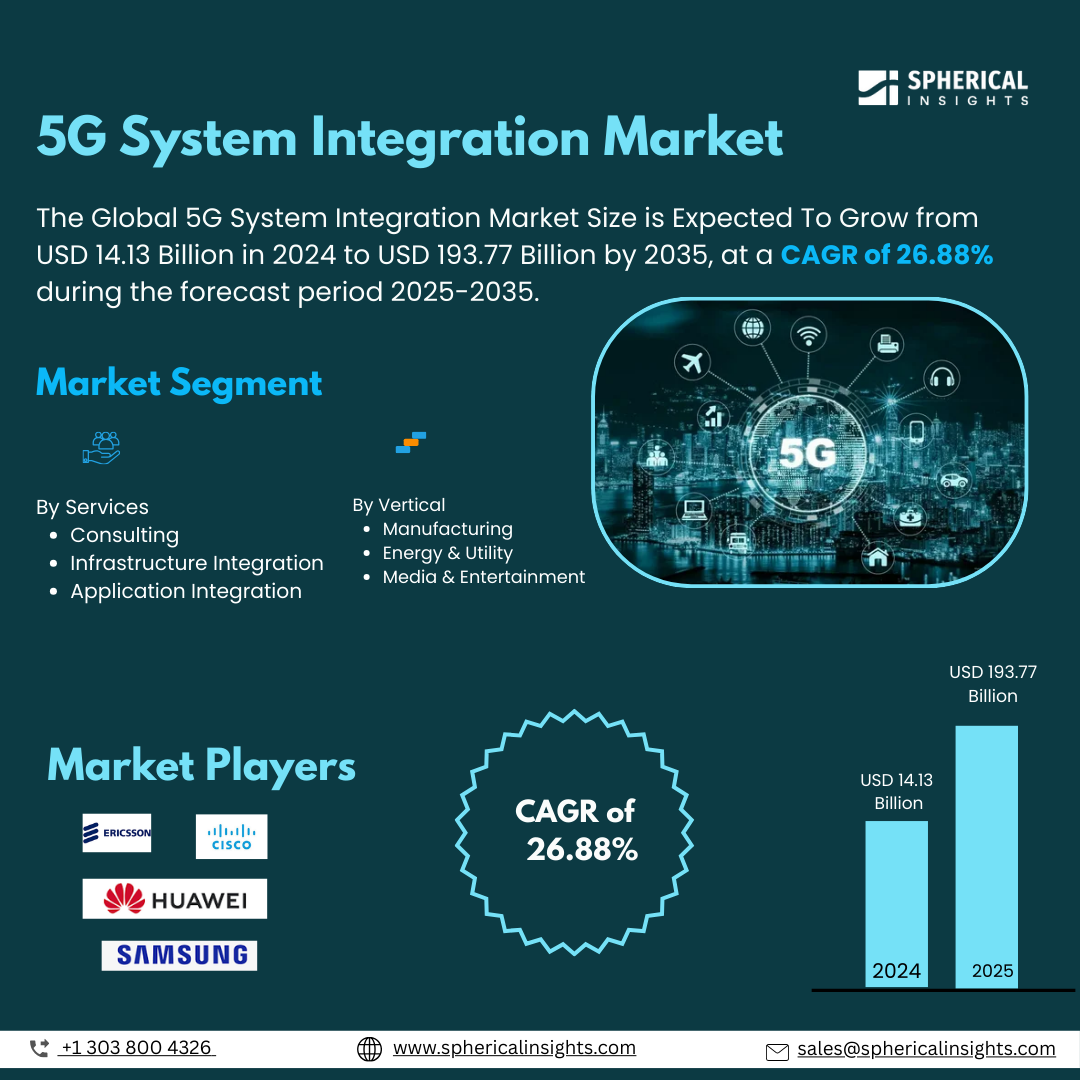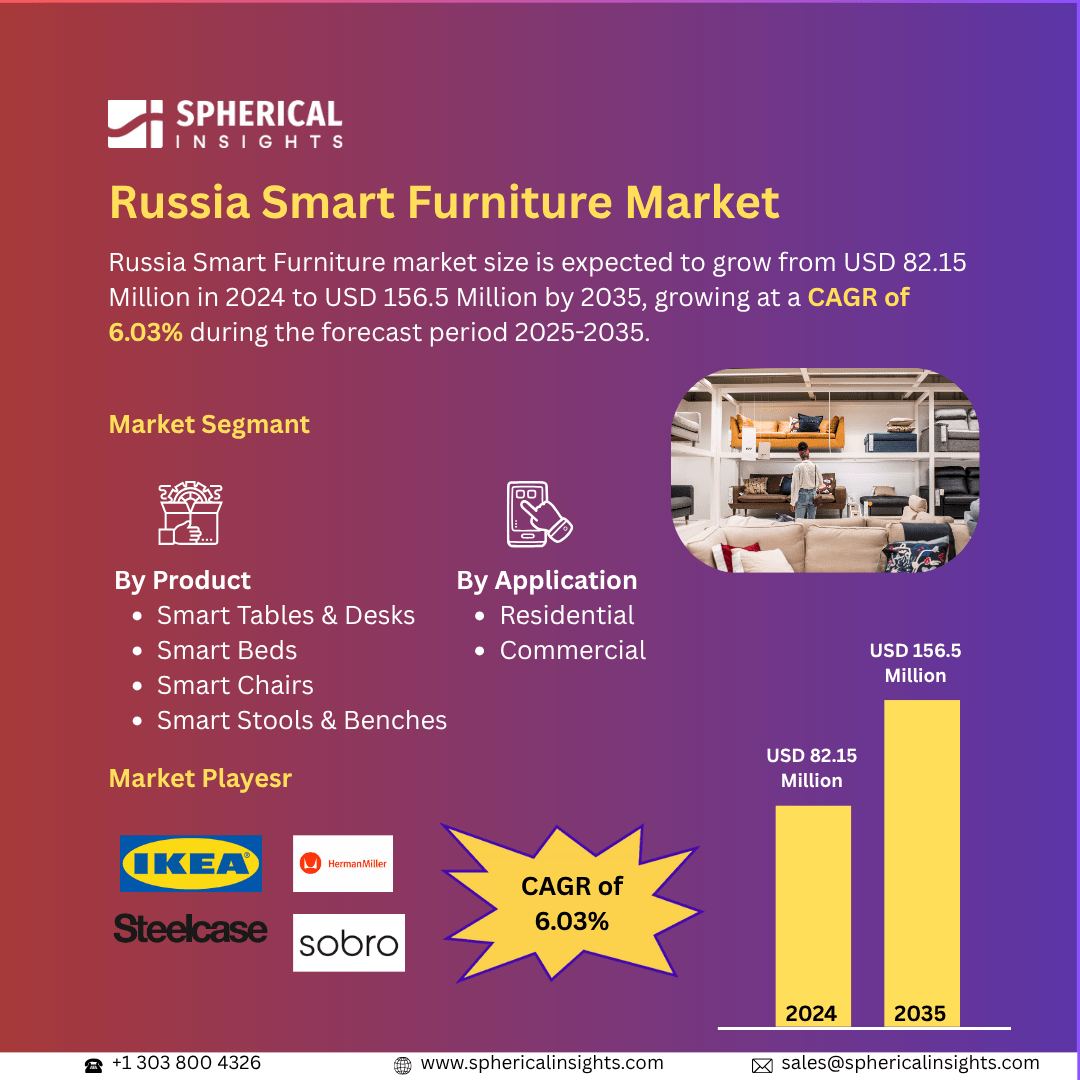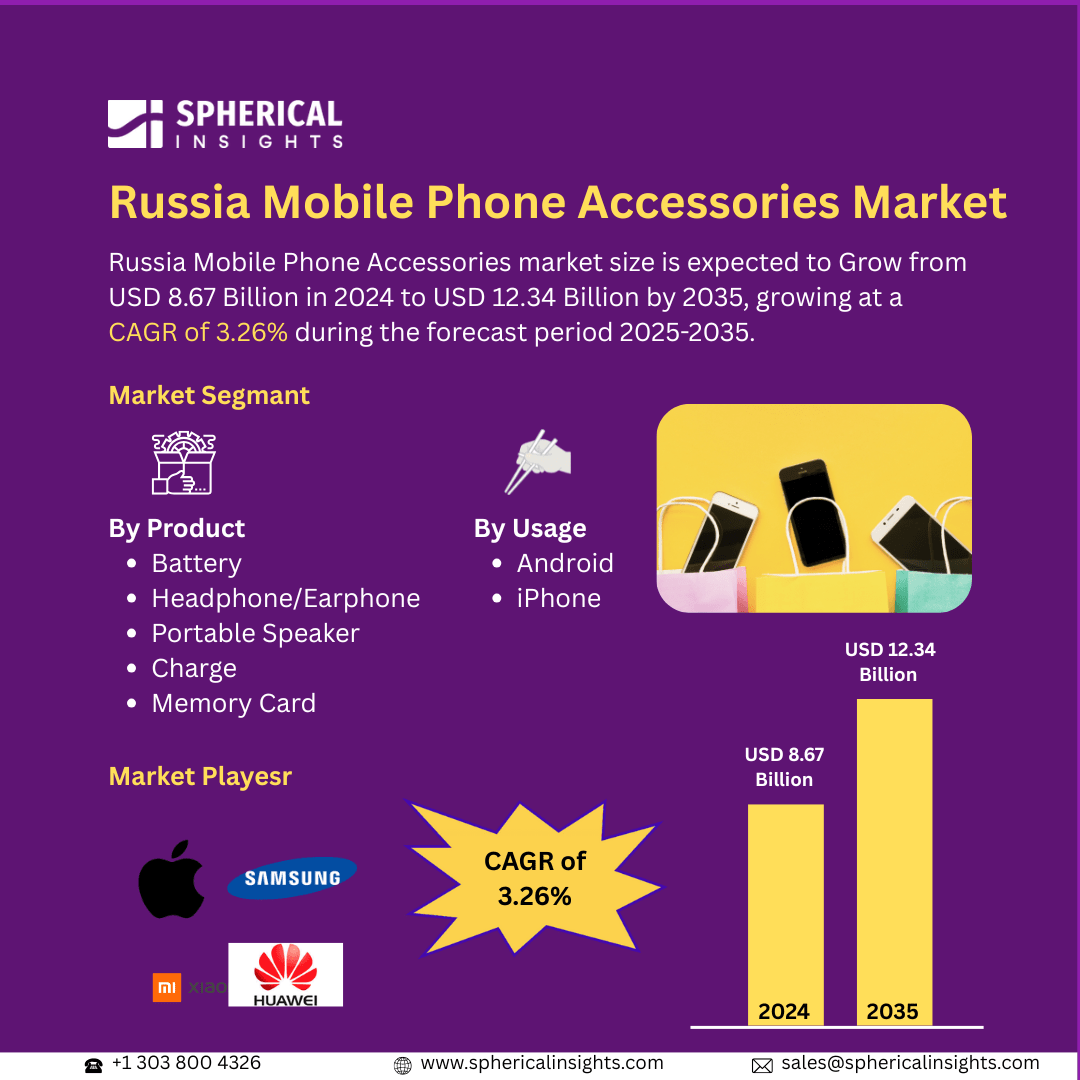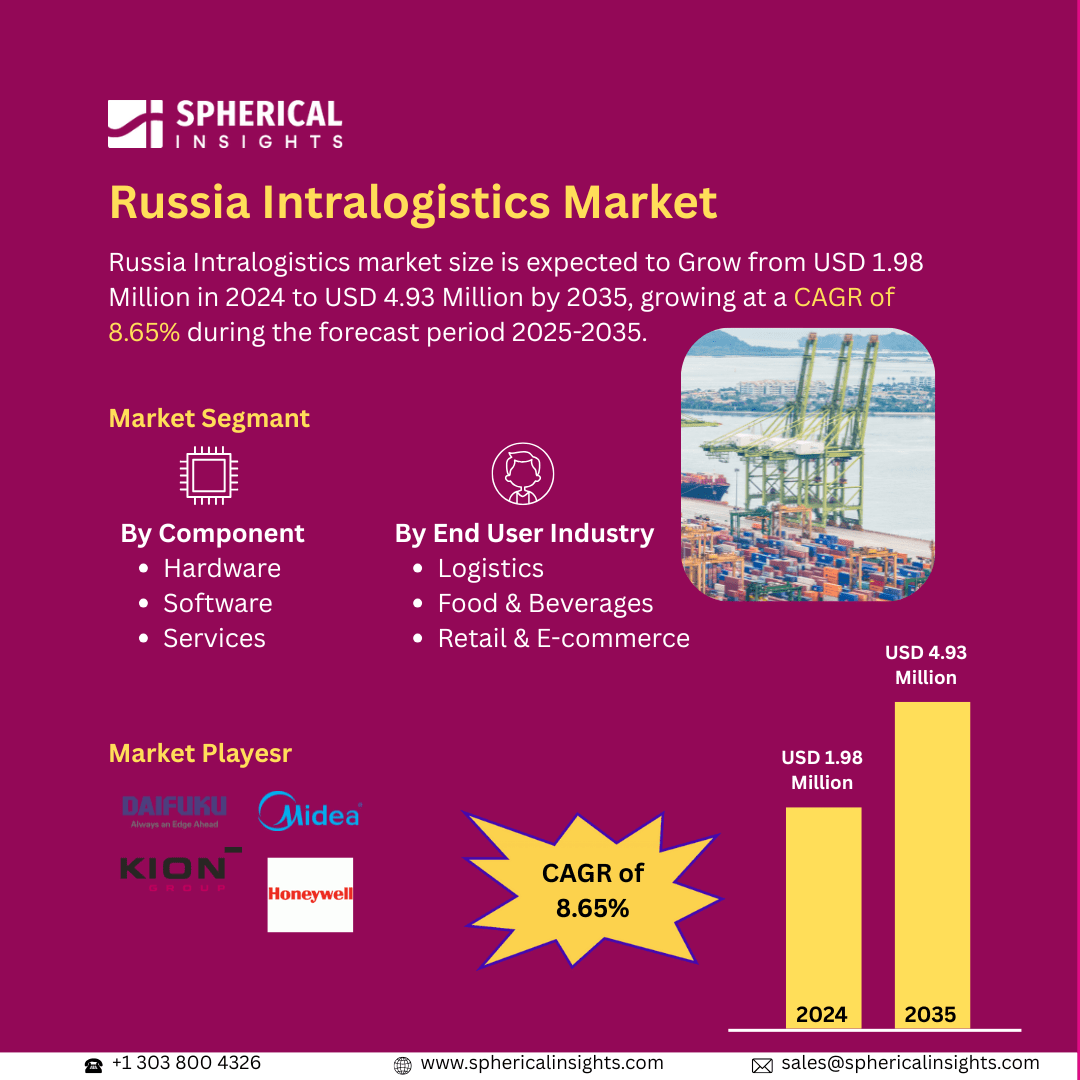Global 5G System Integration Market Insights Forecasts to 2035
- The Global 5G System Integration Market Size Was Estimated at USD 14.13 Billion in 2024
- The Market Size is Expected to Grow at a CAGR of around 26.88% from 2025 to 2035
- The Worldwide 5G System Integration Market Size is Expected to Reach USD 193.77 Billion by 2035
- Asia Pacific is expected to grow the fastest during the forecast period.
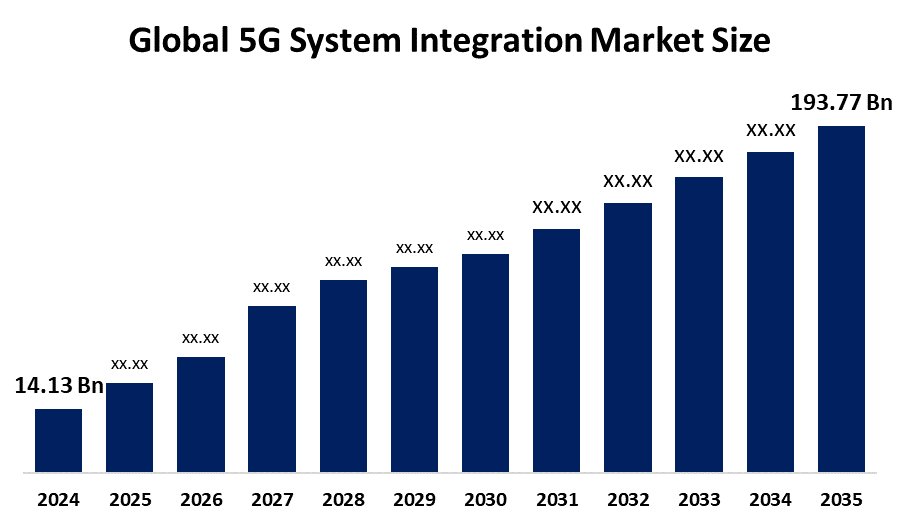
5G System Integration Market
The Global 5G System Integration Market Size refers to the process of combining various 5G network components, including hardware, software, and services, to create a fully functional 5G network. This integration involves connecting base stations, core network elements, antennas, and cloud infrastructure to ensure smooth communication and interoperability. System integrators play a crucial role in deploying, testing, and optimizing these networks to meet performance standards. The market includes telecom operators, network equipment providers, and technology firms collaborating to deliver end-to-end 5G solutions. 5G system integration is essential for supporting enhanced mobile broadband, ultra-reliable low latency communication, and massive machine-type communications. As 5G technology advances, system integration ensures the efficient operation and management of complex network architectures. Overall, the market focuses on enabling faster data speeds, improved connectivity, and new applications such as smart cities and autonomous systems by effectively integrating all 5G components into a unified network.
Attractive Opportunities in the 5G System Integration Market
- Sectors like manufacturing, transportation, and healthcare are increasingly adopting private 5G networks to meet their specialized needs for secure, high-speed, and reliable connectivity. This opens opportunities for system integrators to design, deploy, and maintain tailored 5G solutions for enterprises requiring enhanced control and data privacy.
- Combining 5G with emerging technologies such as Artificial Intelligence, Augmented Reality, and Virtual Reality unlocks new applications across immersive education, remote diagnostics, entertainment, and industrial automation. This synergy creates fresh demand for innovative system integration services that enable seamless, low-latency experiences.
- The partnership of 5G networks with edge computing enables ultra-low latency by processing data closer to the source, crucial for autonomous systems, real-time monitoring, and smart infrastructure. System integrators can capitalize on this by offering solutions that optimize data flow and performance at the network edge, facilitating next-generation applications.
Global 5G System Integration Market Dynamics
DRIVER: Industries like healthcare, automotive, manufacturing, and entertainment are adopting 5G to enable innovations such as remote surgery
The increasing demand for high-speed internet and enhanced network capacity drives telecom operators to adopt 5G technologies rapidly. The rise of connected devices, including smartphones, IoT gadgets, and smart city applications, necessitates advanced network integration to support massive data traffic and low latency requirements. Additionally, industries like healthcare, automotive, manufacturing, and entertainment are adopting 5G to enable innovations such as remote surgery, autonomous vehicles, smart factories, and immersive media experiences. The growing investments by governments and private sectors in 5G infrastructure development further accelerate market expansion. Furthermore, the complexity of 5G networks, which involve multiple technologies like Massive MIMO, network slicing, and edge computing, requires specialized system integration services, increasing the demand for expert integrators. Together, these factors contribute significantly to the robust growth and adoption of 5G system integration worldwide.
RESTRAINT: Complexity of integrating diverse technologies such as Massive MIMO
The global 5G system integration market faces several restraining factors that could slow its growth. One major challenge is the high cost associated with deploying 5G infrastructure, including expensive hardware, software, and skilled labor required for system integration. Additionally, the complexity of integrating diverse technologies such as Massive MIMO, network slicing, and edge computing can lead to longer deployment times and technical difficulties. Regulatory hurdles and spectrum allocation issues in various countries also pose challenges, potentially delaying network rollouts. Security concerns surrounding 5G networks, including data privacy and cyber threats, add another layer of complexity that system integrators must address. Furthermore, the shortage of skilled professionals with expertise in 5G technology limits the availability of qualified system integrators. Finally, the ongoing impact of global supply chain disruptions can lead to delays in acquiring critical components, further restraining market growth. These factors collectively create obstacles in the seamless expansion of 5G system integration.
OPPORTUNITY: Rise of customized private 5G networks for sectors such as manufacturing
One notable area is the rise of customized private 5G networks for sectors such as manufacturing, transportation, and healthcare, which require specialized, secure, and high-speed connectivity solutions. Additionally, integrating 5G with cutting-edge technologies like AI, augmented reality, and virtual reality unlocks innovative applications in fields such as immersive education, remote diagnostics, and advanced entertainment experiences. The synergy between 5G and edge computing offers a chance to deliver ultra-low latency services by processing data closer to the source, benefiting autonomous systems and real-time monitoring. Strategic alliances between telecom operators and cloud providers also create new business models and service offerings. Moreover, government-led initiatives focusing on smart infrastructure and digital transformation open doors for integrators to engage in large-scale projects. These diverse opportunities enable the 5G system integration market to explore new avenues for expansion and technological advancement.
CHALLENGES: Rapid technological changes make updates difficult without disrupting services
The 5G system integration market faces unique challenges like ensuring smooth interoperability between various vendors’ equipment and managing complex network slicing and virtualization. Rapid technological changes make updates difficult without disrupting services. Security is a critical concern, as 5G networks are prime targets for cyberattacks. Coordination among multiple stakeholders across regions adds complexity, while the shortage of skilled professionals familiar with 5G architecture hampers efficient deployment. Addressing these challenges demands innovative strategies and strong collaboration.
Global 5G System Integration Market Ecosystem Analysis
The global 5G system integration market ecosystem involves telecom operators, network equipment manufacturers, software providers, and system integrators collaborating to build seamless 5G networks. Cloud and edge computing companies support infrastructure for low latency applications. Regulatory bodies set standards and manage spectrum, while end users from consumers to enterprises drive demand for advanced connectivity. This interconnected ecosystem relies on collaboration and innovation to deploy and optimize 5G technology, enabling faster, more reliable communication and supporting new applications across industries worldwide.
Based on the services, the infrastructure integration segment dominated the market in 2024 and accounted for the largest share over the forecast period
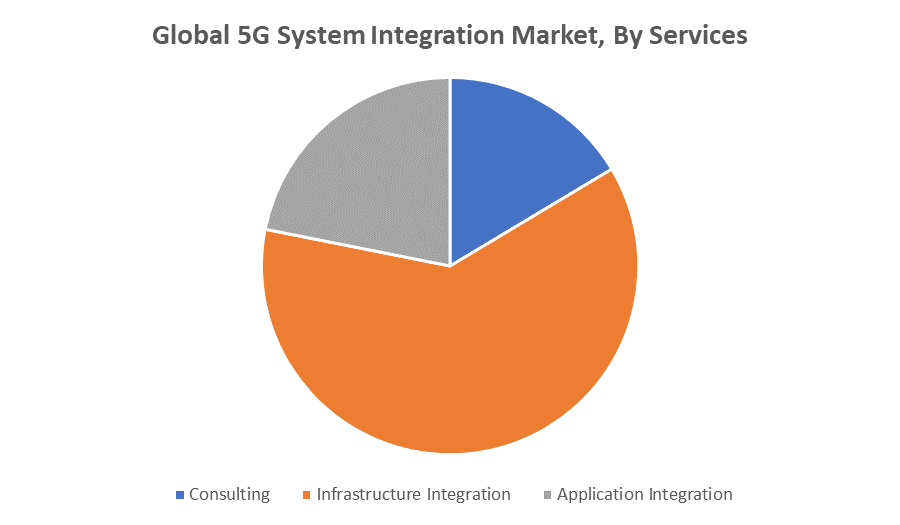
The infrastructure integration segment is expected to maintain its leading position throughout the forecast period due to the critical role of integrating core network components, base stations, and related hardware to build efficient and scalable 5G networks. The growing need for robust and seamless infrastructure to support increasing data traffic and advanced 5G applications drives the sustained demand for infrastructure integration services globally.
Based on the vertical, the IT & telecom segment dominated the market during the forecast period
The IT & telecom segment dominance is driven by the sector’s crucial role in deploying and managing 5G networks, requiring extensive system integration to support high-speed connectivity and network efficiency. The continuous expansion of telecom infrastructure and increasing demand for advanced IT solutions contribute to the segment’s leading market share.
North America is anticipated to hold the largest market share of the 5G system integration market during the forecast period
North America is expected to dominate the 5G system integration market throughout the forecast period due to several key factors. The region boasts a well-established telecom infrastructure and hosts some of the world’s leading network operators and technology companies actively investing in 5G rollout and innovation. Early adoption of 5G technology by both consumers and industries has accelerated demand for integrated 5G solutions. Additionally, substantial government initiatives and funding aimed at expanding digital infrastructure and advancing smart city projects have further boosted market growth. North America’s focus on developing next-generation applications such as autonomous vehicles, IoT, and AR/VR also drives the need for robust 5G system integration. The presence of skilled professionals and advanced R\&D facilities enables faster deployment and optimization of 5G networks, securing the region’s largest market share globally.
Asia Pacific is expected to grow at the fastest CAGR in the 5G system integration market during the forecast period
Asia Pacific is expected to grow at the fastest CAGR in the 5G system integration market during the forecast period. This rapid growth is driven by the region’s large population, increasing smartphone penetration, and rising demand for high-speed internet connectivity. Countries like China, South Korea, and Japan are investing heavily in 5G infrastructure and technology development, accelerating system integration activities. Additionally, expanding industrial sectors in Asia Pacific are adopting 5G to enable smart manufacturing, IoT, and other advanced applications. Government initiatives supporting digital transformation and favorable regulatory policies further fuel market expansion. The combination of these factors positions Asia Pacific as the fastest-growing market in 5G system integration globally.
Recent Development
- In May 2025, Vodafone Idea (Vi) launched 5G services in the Delhi NCR region, utilizing Ericsson's high-performance radio solutions. This rollout is part of Vi's plan to expand 5G services across all 17 telecom circles by August 2025, aiming to enhance network performance and user experience.
Key Market Players
KEY PLAYERS IN THE 5G SYSTEM INTEGRATION MARKET INCLUDE
- Ericsson
- Nokia
- Huawei Technologies
- Cisco Systems
- Samsung Electronics
- ZTE Corporation
- NEC Corporation
- Fujitsu Limited
- Intel Corporation
- Ciena Corporation
- Others
Market Segment
This study forecasts revenue at global, regional, and country levels from 2020 to 2035. Spherical Insights has segmented the 5G system integration market based on the below-mentioned segments:
Global 5G System Integration Market, By Services
- Consulting
- Infrastructure Integration
- Application Integration
Global 5G System Integration Market, By Vertical
- Manufacturing
- Energy & Utility
- Media & Entertainment
Global 5G System Integration Market, By Regional Analysis
- North America
- Europe
- Germany
- UK
- France
- Italy
- Spain
- Russia
- Rest of Europe
- Asia Pacific
- China
- Japan
- India
- South Korea
- Australia
- Rest of Asia Pacific
- South America
- Brazil
- Argentina
- Rest of South America
- Middle East & Africa
- UAE
- Saudi Arabia
- Qatar
- South Africa
- Rest of the Middle East & Africa
